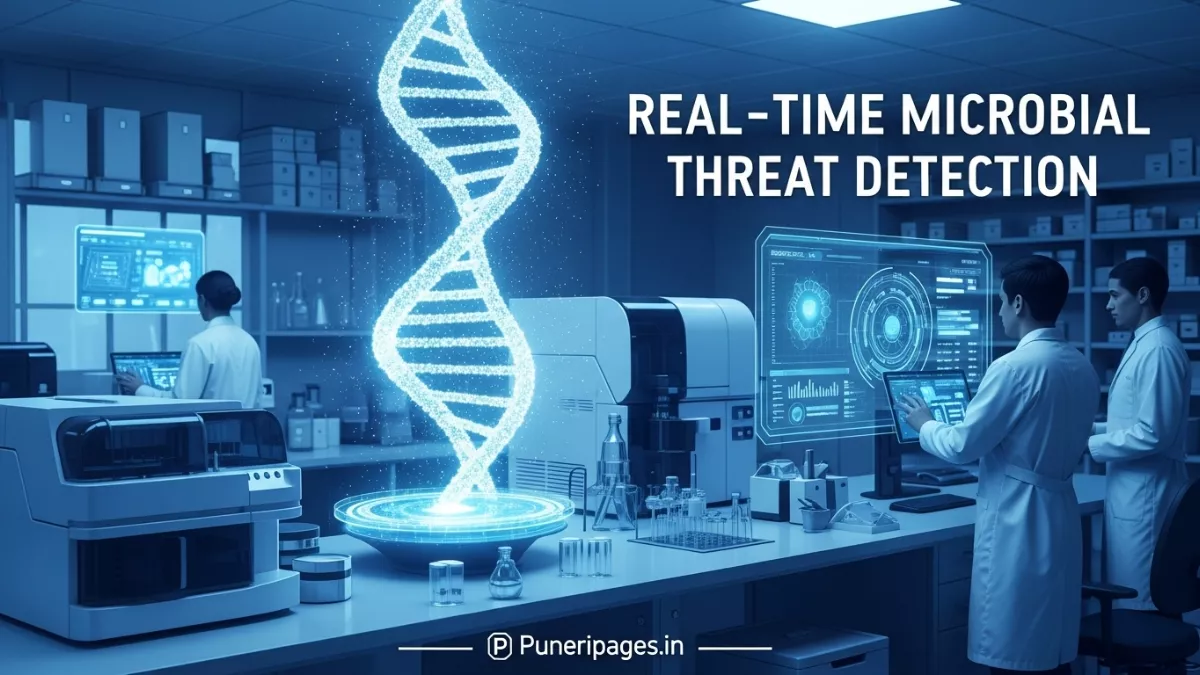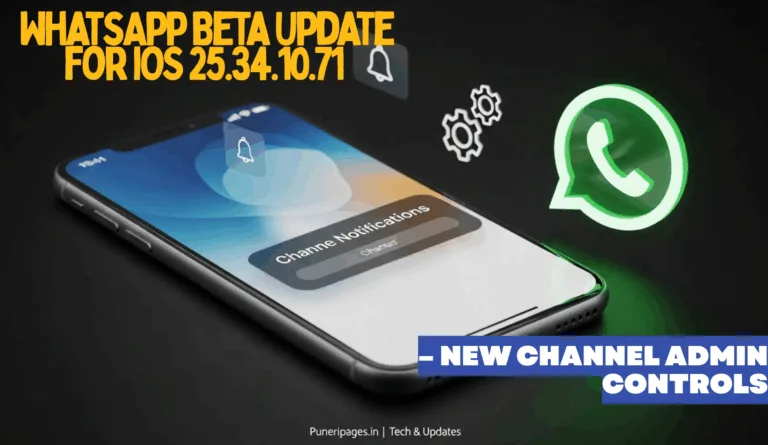
Scientists monitor real-time microbial threat detection technology that identifies harmful pathogens within minutes.
By Prashant for PuneriPages.in
We have reached a pivotal moment in biosecurity and microbial detection with the announcement of MARTi—an open-source software tool developed by scientists at the Earlham Institute that enables real-time detection of microbial threats from sequencing data. This breakthrough capability promises to transform how we monitor infectious agents, agricultural pathogens and environmental microbiomes.
In this comprehensive analysis, we explore the technology behind MARTi, its applications in multiple fields, the implications for global health and security, and the challenges that remain before widespread deployment.
Table of Contents
How the Real-Time Microbial Detection Tool Works
MARTi (Metagenomic Analysis and Real-Time Intelligence) operates by ingesting raw sequencing data as it is generated, performing rapid taxonomic classification, abundance estimation and functional annotation of microbial communities.
Key features include:
- In-field operability: Runs on standard laptops for lightweight analyses or on high-performance computing clusters for large-scale studies.
- Browser-based Graphical User Interface (GUI): Allows non-bioinformaticians to visualise taxonomic profiles, abundance charts and drift in microbial populations.
- Customisable reference databases: Supports adaptation to clinical, agricultural or environmental contexts with user-defined microbial libraries.
- Rapid turnaround: Capable of returning actionable insights in under minutes instead of hours or days typical of culture-based methods.
In essence, MARTi bridges the gap between sequencing output and real-time decision making. Rather than waiting for culturing or batch processing, laboratories or field units can detect emerging pathogens, contamination events or microbial shifts as they unfold.
Applications Across Clinical, Agricultural and Environmental Domains
Clinical Diagnostics & Hospital Outbreak Control
In hospital settings, early pathogen identification is critical. MARTi’s capability to deliver taxonomic and functional results in real time supports:
- Faster identification of antimicrobial-resistant organisms and uncommon pathogens
- Streamlined infection-control decision making
- Short-turnaround diagnostics for critical care or neonatal units
Given its origins in rapid pathogen identification in preterm infants, the tool has direct clinical relevance.
Agriculture & Food Safety Surveillance
In the agricultural context, MARTi enables:
- Monitoring soil, crop and water microbial communities for early signs of disease
- Tracking contamination of produce or livestock environments
- Rapid response to outbreaks of fungal, bacterial or viral agents that threaten food supply chains
One cited use-case describes deployment aboard research vessels in remote regions, demonstrating the tool’s field-ready design. Phys.org
Environmental & Biosecurity Monitoring
For environmental applications and national biosecurity, MARTi supports:
- Real-time surveillance of air, soil or water for harmful microbial agents
- Detection of bio-threats or bioterror-related organisms
- Longitudinal monitoring of microbial shifts tied to ecosystem changes
Researchers noted deployment in Antarctic research vessels for marine microbiome tracking.
The Significance of Real-Time Microbial Threat Detection
The shift to real-time microbial detection is a game-changer:
- Speed: Time to result falls from hours/days to minutes, enabling faster action
- Scalability: Minimal infrastructure required for field installation broadens surveillance reach
- Versatility: Adaptable across domains—clinical, agricultural, environmental
- Accessibility: Open-source release removes barriers to entry and supports global adoption
By enabling near-instant insight into microbial communities, MARTi significantly enhances our capacity to detect, respond to and mitigate microbial threats.
Challenges and Considerations for Widespread Deployment
Despite its promise, several challenges remain:
- Data quality and noise: Rapid metagenomic analyses face difficulties distinguishing low-abundance pathogens from background microbial “noise”
- Reference database completeness: Rare or novel organisms may evade classification without comprehensive databases
- Interpretation of functional data: Translating microbial presence into clinical or actionable risk remains complex
- Infrastructure and training: While scalable, deployment in low-resource settings still requires training and oversight
- Regulatory frameworks: Clinical and agricultural usages must comply with standards and validation processes
As noted in recent modeling of microbial risk assessment, comprehensive systems need to integrate detection tools with decision frameworks and validation pipelines.
Case Study: Hypothetical Deployment in a Hospital Setting
Consider a tertiary-care hospital deploying MARTi:
- A blood sample from a patient in ICU is sequenced on-site
- MARTi’s pipeline processes data in real-time, identifies an unusual antibiotic-resistant strain in under 30 minutes
- Infection control isolates the patient, initiates targeted therapy and alerts lab colleagues
- Nosocomial transmission is avoided, treatment is optimised and hospital stay is shortened
This scenario exemplifies the tool’s potential to save lives, reduce costs and prevent outbreaks.
Future Directions: Where Microbial Detection Is Heading
Looking ahead, the following trends are poised to drive further innovation:
- Integration with portable sequencers and IoT sensors for fully mobile field surveillance
- AI-driven anomaly detection in microbial datasets to flag unusual patterns without predefined thresholds
- Cloud-enabled real-time dashboards linking hospitals, agriculture platforms and environmental monitors
- Standardised regulatory pathways for metagenomic diagnostics to facilitate clinical adoption
- Global microbial surveillance networks using open-source platforms like MARTi to detect cross-border threats
These developments will elevate microbial monitoring from reactive to proactive and predictive.
Conclusion
The unveiling of MARTi marks a major milestone in real-time microbial threat detection. Its ability to analyse sequencing data as it is generated, operate in diverse settings, and deliver actionable insight rapidly positions it as a core tool for clinical diagnostics, agriculture, environment and biosecurity.
As we adopt such technologies, the feedback loops between detection, action and mitigation will shrink, enabling faster, smarter responses to microbial threats. In an era where microbes can cross borders and systems at speed, tools like MARTi give us the agility and precision needed to stay ahead.






